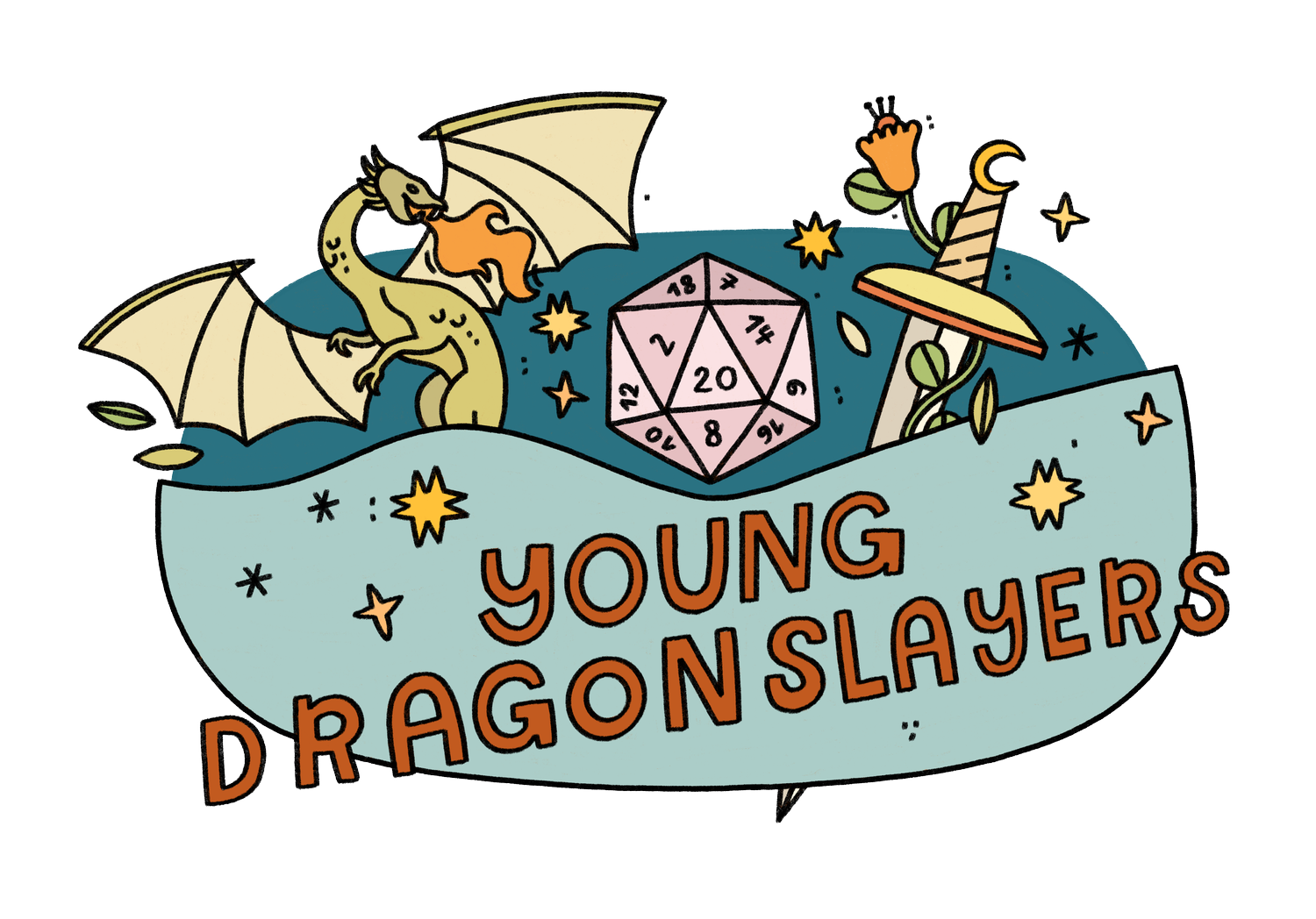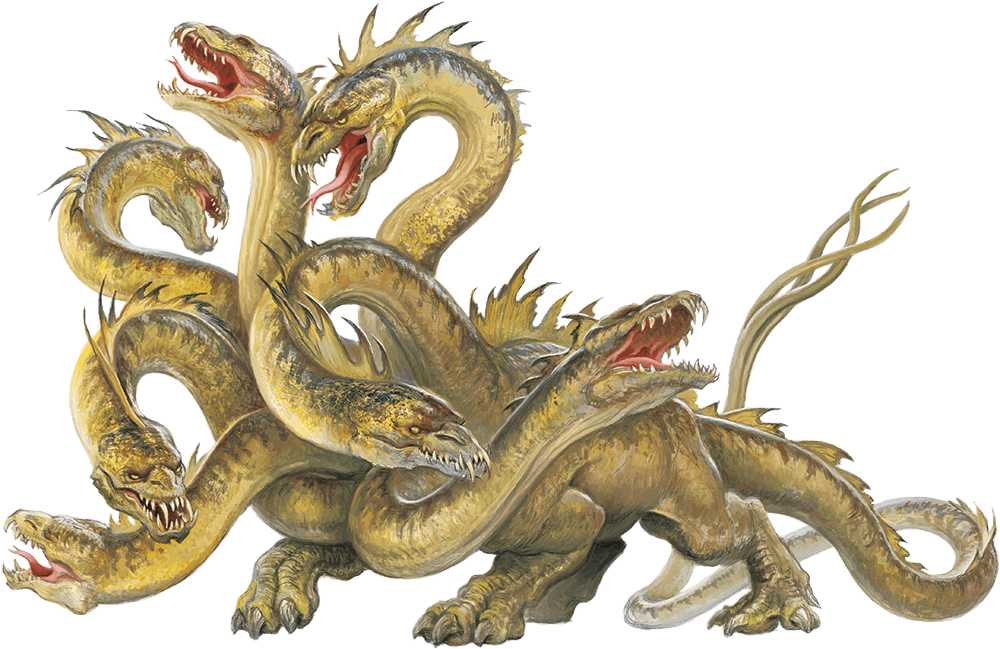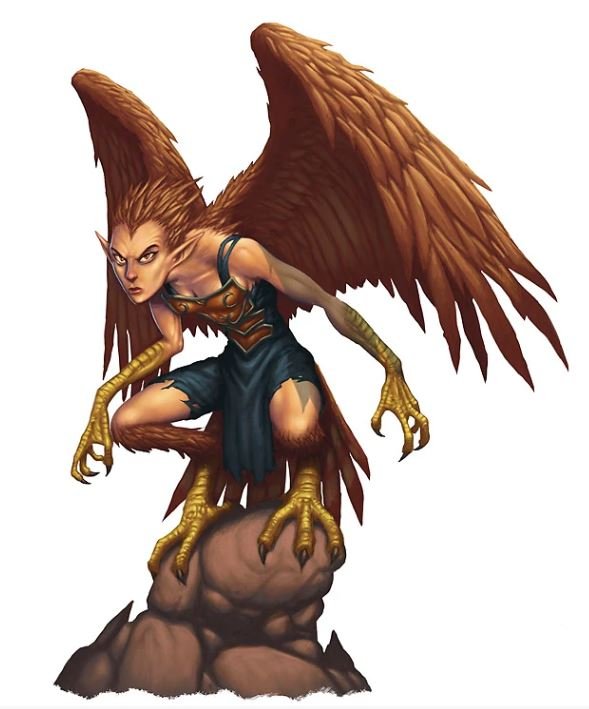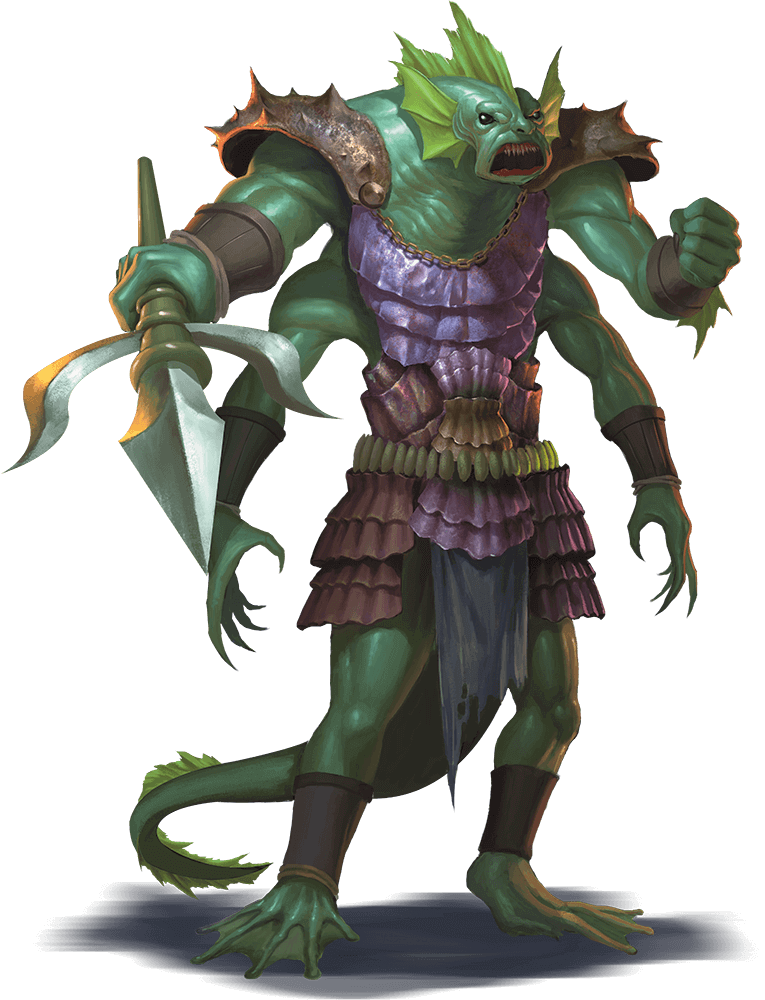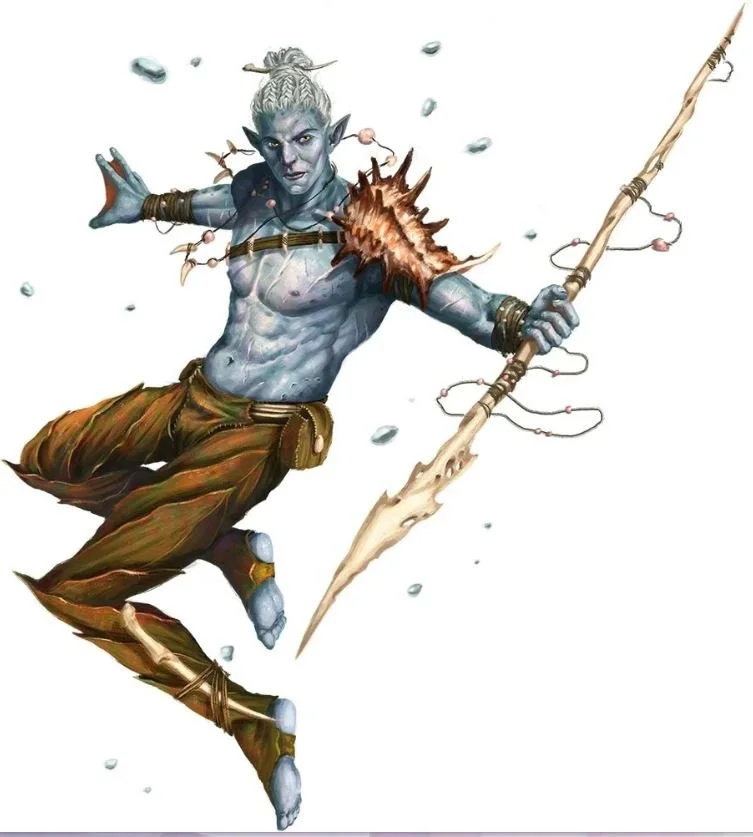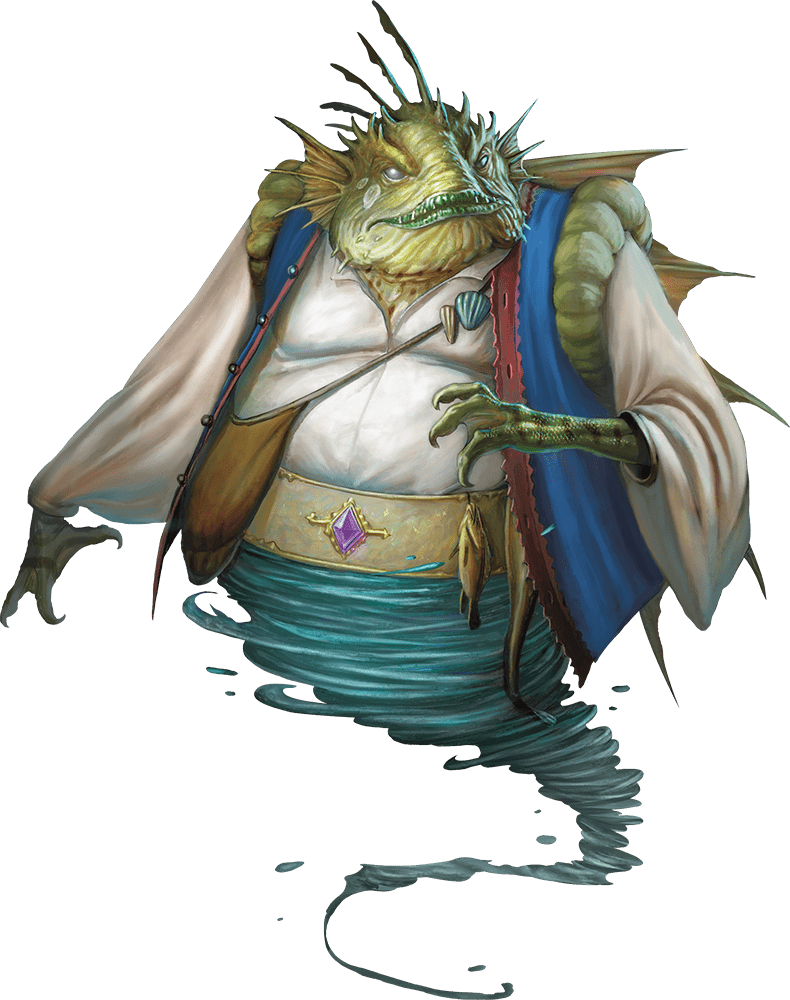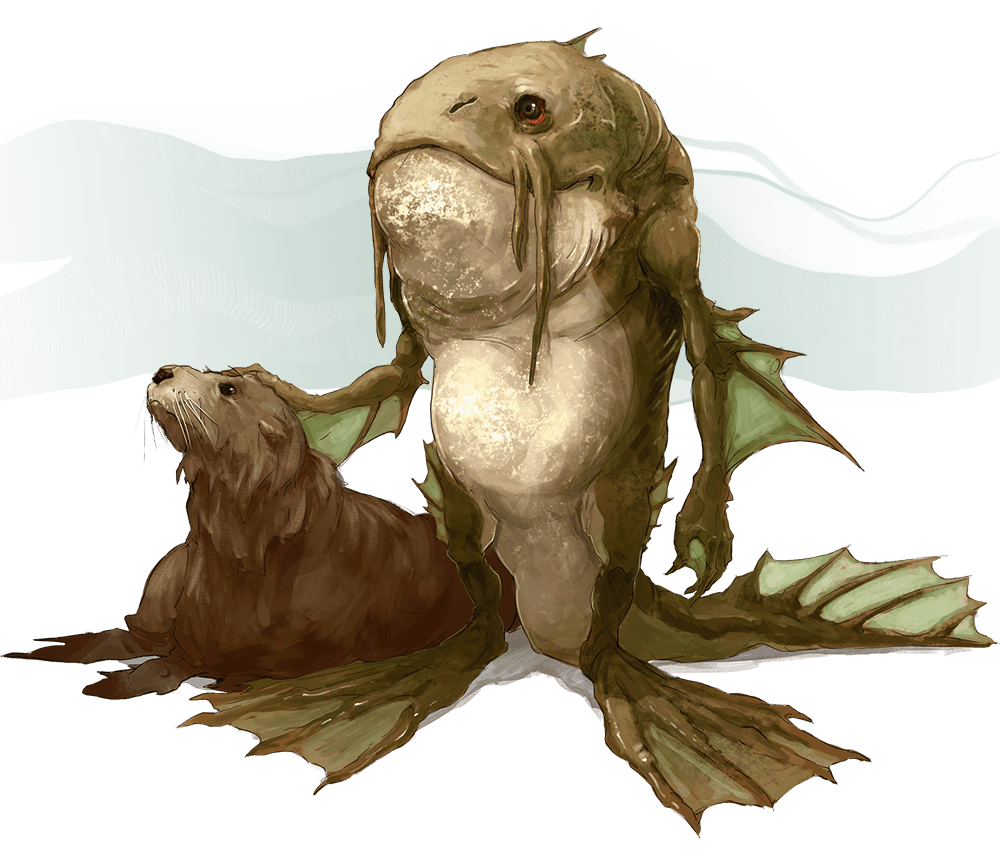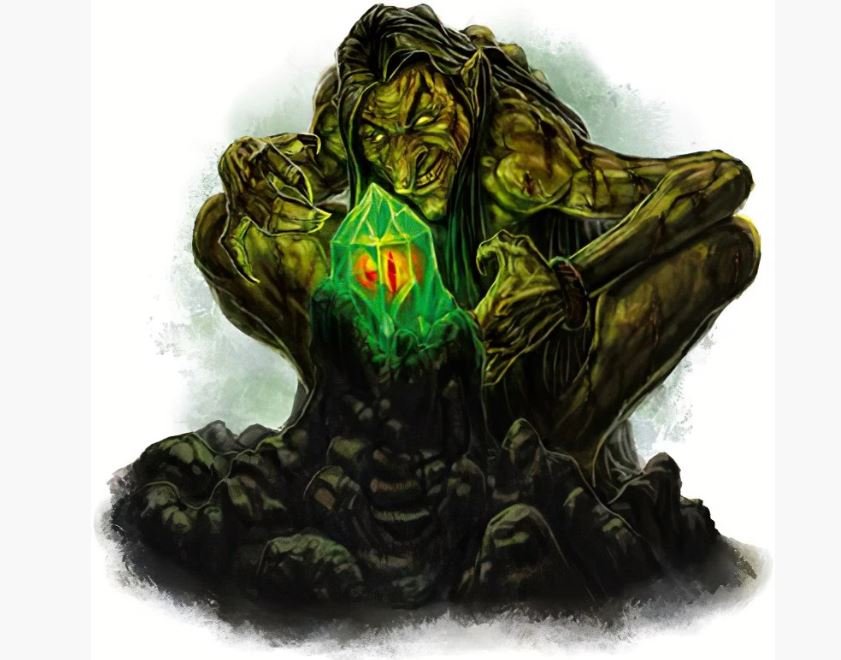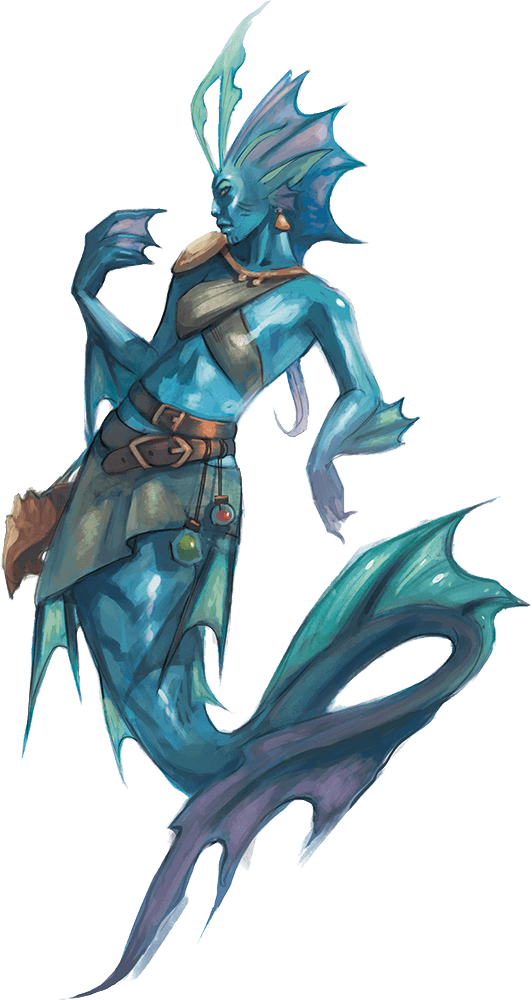10 D&D Sea Creatures for Your Summer Campaign
Summer is one of the best times of the year; freedom from school means lots of time for activities like sports, reading, games, and hanging out with friends and family. Playing Dungeons & Dragons (D&D) rolls these all into one, and summer is the perfect time to roll your dice and go on epic adventures with your friends. Our online summer games are just kicking off, and there are plenty more running all around the world with creative adventures and stories told by players like you. If you’re thinking of running or joining a campaign this summer, you could adventure the high seas, explore the coastline, or dive deep below the surface of the ocean to find whole underwater societies. There are tons of cool water items, environments, and creatures in the world of D&D; here are a few of our favorites for your summer campaign.
10. Hydras: Many-Headed Sea Creatures
If you’re familiar with Greek myths, you may recognize the hydra, a giant sea monster with multiple heads. Within the lore of D&D, all hydras were spawned from the dragon god Lernaea after she was defeated by the dragon queen Tiamat. If you find yourself battling a hydra, beware: its many heads make it a formidable foe. Each head can attack with a fearsome bite; each time one is defeated, two more will grow back! A many-headed hydra is strong against effects like being stunned or knocked unconscious. But it does have one weakness; deal fire damage, and any decapitation will be permanent.
9. Harpies: Formidable D&D Foes
The very first harpy was an elf who learned a magical birdsong from Aerdrie Faenya, the goddess of the sky. This elf hoped to use the song to enamor Fenmarel Mestarine, the elf god she loved. When her attempt failed, she responded in anger, invoking a curse which transformed her into part bird and part elf; she became filled with the compulsion to lure in creatures, steal their trophies, and end their lives. Now, seafaring D&D adventurers know to listen carefully for the enticing music of the harpies. Their song can lure people in, causing them to fall victim to the harpy’s influence and move ever closer - even through dangerous terrain like quicksand or lava.
8. Sahuagin: Amphibious Shark Creatures
Known as “sea devils” for their love of killing, sahuagin are amphibious sharklike humanoids. They worship Sekolah, D&D’s shark god, who has granted them telepathic abilities over sharks, which they use as attack animals. Much like the sharks they control, sahuagin go into a feeding frenzy when they smell blood and will ruthlessly hunt down the source. Male sahuagin can become barons, four-armed trident-wielding mutants. Female sahuagin can become priestesses, summoning magical tridents, slinging guiding bolts, and using the power of Sekolah to paralyze humanoids in their path.
7. Aquatic Elves: Fighters of the Sea
The aquatic elves have sworn to protect the ocean by fighting all evil within it - particularly the sahuagin, their sworn enemies. Magic is rare in aquatic elves, so they instead train with weapons like spears, swords, and longbows. These amphibious elves live in shallow waters and have a communal culture where all property is shared. They hold the community above the individual, believing that rivalries and petty egos would mean an end to their species’ survival. Because of this, they do not trust other species and communities; however, their natural curiosity often gets the better of them, and many inquisitive elves sneak away to learn more about other species and factions.
6. Water Elementals: Ocean-Themed Enemies
On first glance, the rolling ocean waves and the body of a water elemental are identical, but veteran adventurers know these sentient elementals post danger to sailors unaware. Made of pure magical water and coming from the Elemental Planes, water elementals can move themself into nearly any shape. They use this ability to slam their enemies, surrounding them with their own watery bodies, and even drown them by pouring themselves into their lungs. Fortunately, water elementals are neutral creatures and will only attack if provoked - or if controlled by another creature, like the malevolent marids.
5. Marids: Magical Sea Creatures
Marids reside in lush castles and fortresses in the Elemental Plane of Water. These water genies look down on all but their own kind, claim noble titles and servants, and dress in extravagant clothes. These conceited creatures love to hear themselves talk and are known to tell fanciful stories - that are, shall we say, creative with the truth. Be wary if you interrupt them on a storytelling spree - they consider such actions a crime and may use their many water powers against you: shooting you with jets of water, forging water weapons to attack you, or summoning water elementals to fight on their side.
4. Locathah: Humanoid Fish
In much the same way that tabaxi are humanoid cats and harengon are humanoid rabbits, the locathah are humanoid fish. In D&D, they can be non-player characters, but they’re also a playable race (check out our blog post on playing animal races to learn more)! Locathah are peaceful creatures living in tight-knit underwater communities. Their nonaggressive nature has made them the subjects of slavery and abuse from other aquatic creatures, but the locathah people have grown resilient; they have great pride in their communities and can resist attempts to be charmed, frightened, paralyzed, or stunned by the sheer power of their will.
3. Sea Hags: Aquatic Villains
The nastiest of all the hags, sea hags are covered in seaweed, scales, and other grimy gunk. They can disguise themselves with magic and appear as any kind of humanoid, but when they reveal their true forms, they can strike terror into those who gaze on them, filling them with fear and making them unable to move any closer. Once she has frightened someone, a sea hag can level a deathly glare at them, which, if they fail their roll, with immediately drop them to 0 hit points. Some sea hags band together into a coven; when together, a coven of hags can cast powerful spells to curse others, summon lightning, and communicate with other planes, like the Elemental Plane of Water, the Astral Plane, or the Plane of Shadow.
2. Merfolk: Mermaids, D&D-Style
You are probably already familiar with the concept of a mermaid: a creature with the torso of a human and the tail of a fish. In D&D, these creatures are called merfolk. They live in communal tribes in wonderous underwater locations: enormous cave networks, ancient ruins, coral reefs, or stone cities they carve themselves. When close to the surface, merfolk towns are lit by the sun’s rays coming through the water. When down in the depths, they rely on the light of bioluminescent sea life. Merfolk mostly interact with other sea life but are known to occasionally commune with land dwellers, some even falling in love.
1. Storm Giants: Powerful Sea Beings
Deeply solitary beings, storm giants live away from prying eyes at the bottom of the sea floor. They have natural divination powers, prophesying the rise and fall of empires, the fortune of great adventurers, and the fate of clans. While Storm Giants are content to passively watch events play out as they foresee, they impart their visions to the occasional adventurer, provided they come with good intentions. However, the anger of a storm giant is a force to be reckoned with, as they quickly turn to anger and unleash the magical lightning bolts they wield.
Start a D&D Adventure on the High Seas!
You can craft your own D&D campaign using some of these aquatic creatures! We have an online course called Dungeon Leaders that will help you build the skills to become a Dungeons Master run your own campaign. But if you'd rather sail the high seas in an adventure of someone else's creation, myself and the other Dungeon Masters here at Young Dragonslayers games for tweens and teens everywhere from the depths of the ocean to the far reaches of outer space!
